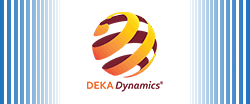- PAPUA NEW GUINEA (PORT MORESBY): 7-11/7/25
Course Brief
Understanding of sampling distributions and their statistical properties is essential in translating models based on widely spaced data to a scale suitable for decision making. In the mining context, exploration and feasibility study data is often widely spaced and does not have the detail to derive accurate models of ore and waste for use in economic evaluation, Go/No-Go decision making and budgeting for the next stage of project development.
Initial decisions to proceed and budget for the next stage of evaluation are taken at the geological model or Inferred Mineral Resource stage which may have very wide sample spacing (boreholes). Where data of acceptable quality are available for early-stage projects, statistical methods exist to estimate the global characteristics of the mineral distribution. One of these characteristics is the quantity or proportion of material above specified economic cut-offs. These techniques cannot locate the exact positions of “ore” and “waste” but only give an indication of expected quantities within the specified limits. The methods presented in this course are all used to assess both geological properties and risk in mining projects.
This course is part of a series of technical training and professional development courses for Mineral Resource specialists in a mining environment. Although much of the content is general to the mineral resource industry, it provides delegates who are already competent in Resource Estimation with the opportunity to enhance their estimation techniques.
Although several advanced techniques and case studies are presented during the course, it is not possible to present all advanced estimation methods adequately in a one-week course. This course is designed for global exposure and will have variable content depending on the local mining environment. Normally Statistical Sampling, Advanced Linear Regression with either UC or IK and Conditional Simulation using one variable.
Key Learning Objectives
- Statistical Sampling, Variance and “Support”
- Indicator Estimation
- Conditional Simulation
NOTE: The concepts presented in this course are complex, not intuitive and generally take many years, a lot of repetition and a lot of interaction with colleagues in the same field to gain competence. Participants should not expect to demonstrate competence at the end of the course rather they should be able to demonstrate an awareness of vocabulary, concepts, basic workflows, software help manuals and how to ask for help/guidance/information or be able to do a literature search for information on concepts and methods by using the correct terminology.
Experience Required of Trainees
- This course assumes that the delegates have a good understanding of basic estimation methods such as nearest neighbour, inverse distance and linear regression (Kriging).
- The concepts and examples used in this course assume that the delegates have several years’ experience in Mineral Resource estimation at grade control, mine evaluation or exploration stages.
- Exploration geologists should have exposure to grade control/mine planning requirements for mineral resource models.
- It is assumed that Delegates are competent in the use of and have access to :
- Suitable commercial geological modelling/mineral resource estimation software (Datamine, Surpac, Vulcan, Isatis etc)
- General use software, Microsoft Word, Excel and Power Point for analysis and Presentations and some exercises
Technical requirements for the course
- Hardware
- Computers for each participant (64-bit with enough memory and a good graphics card if using geology modelling software)
- Participants will need a mouse – touch pads are too slow and there will be a lot of copy/paste in some exercises.
- Software
- An evaluation copy of Geovariance’s ISATIS software will be arranged for by DEKA Dynamics, but participants may use their own software if it has the necessary subroutines to carry out the exercises.
- E-Z Kriging to be supplied by us.
- Although ISATIS now has good 3D viewer capability, delegates may find that Geology modelling software with block modelling display more useful to display results.
- Internet Browsers – Both Internet Explorer (the old one not Edge) and Chrome- required for some online simulation software.
- Java – required for some simulation software used with Internet Explorer.
- Microsoft Excel (required for some exercises) – other spreadsheet software may not work well with the exercises.
- Microsoft Word, PowerPoint or equivalent.
- Adobe Acrobat Reader – to access some documentation.
- “Snip Tool” or similar for screen copies.


